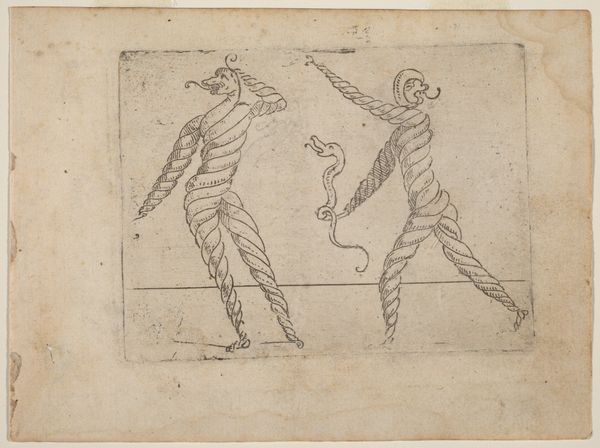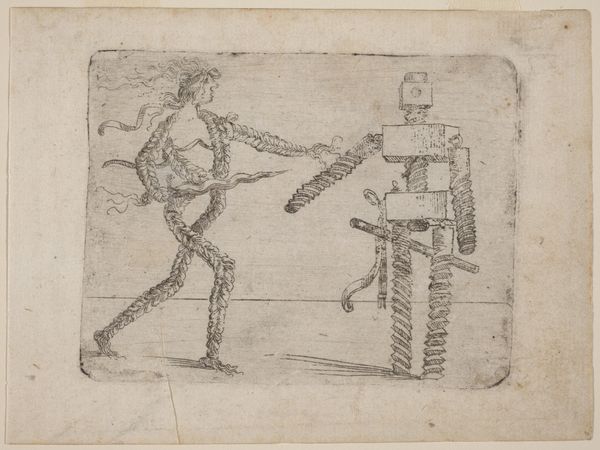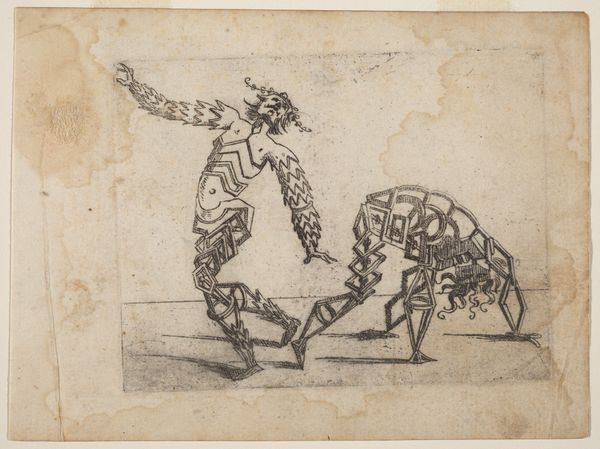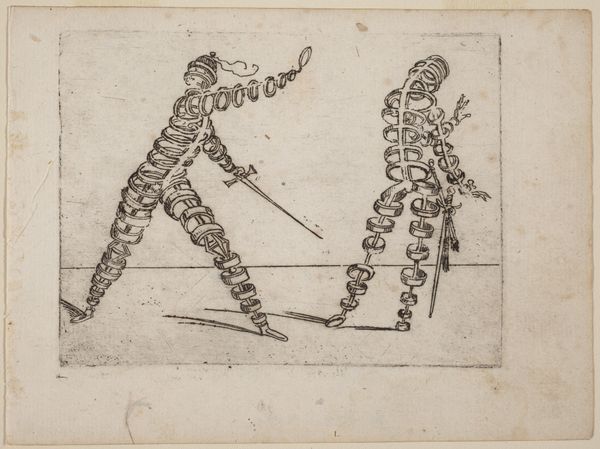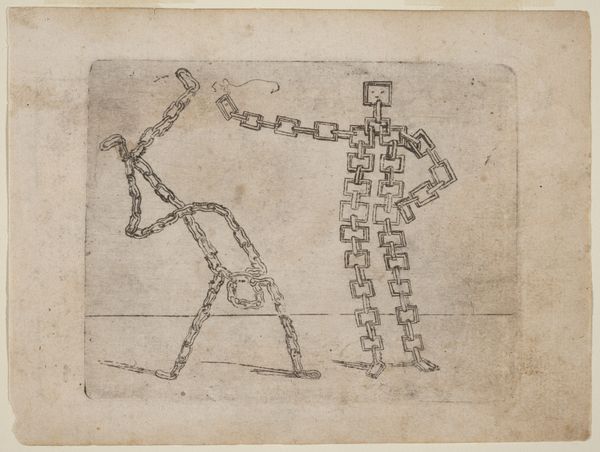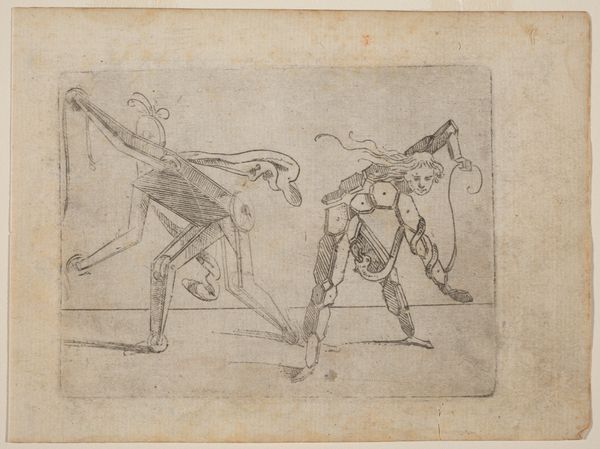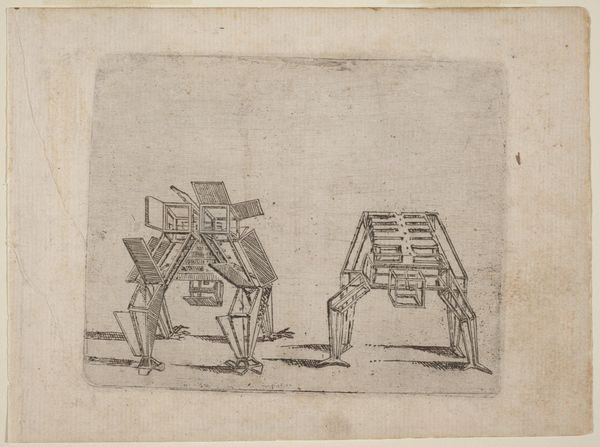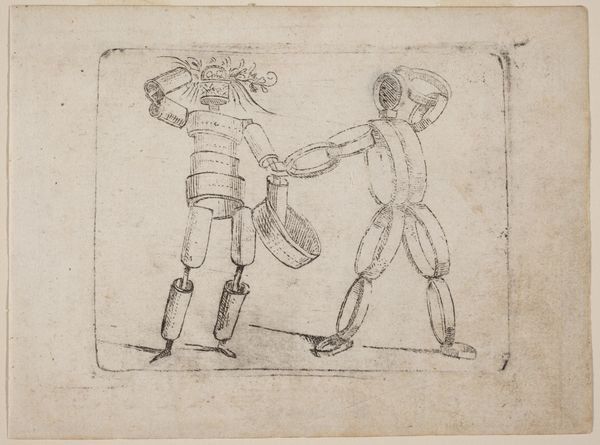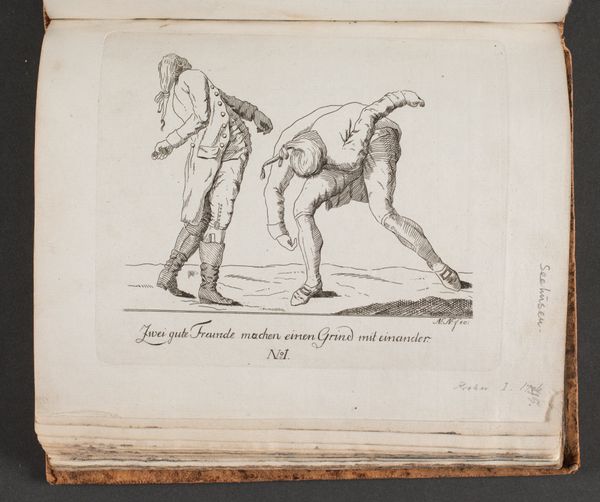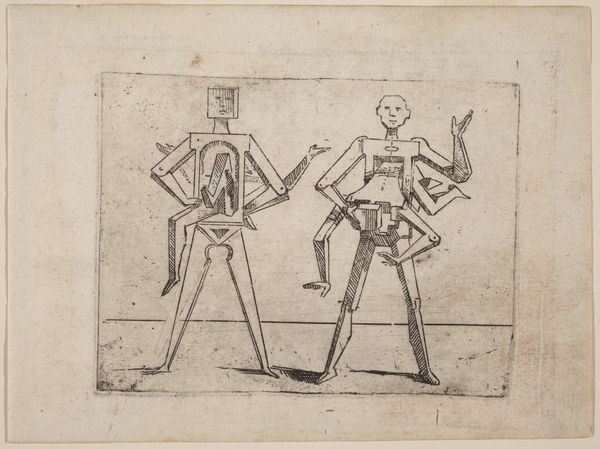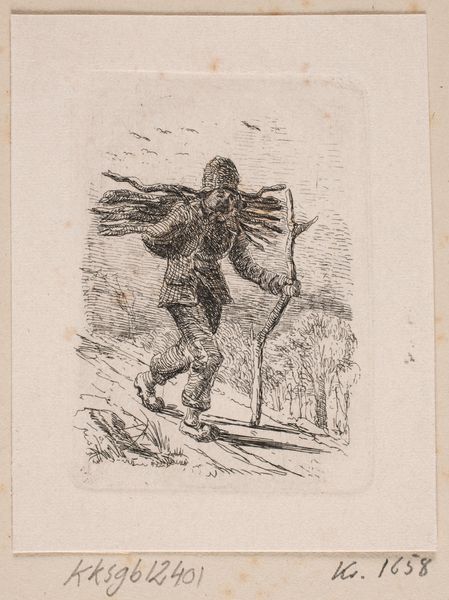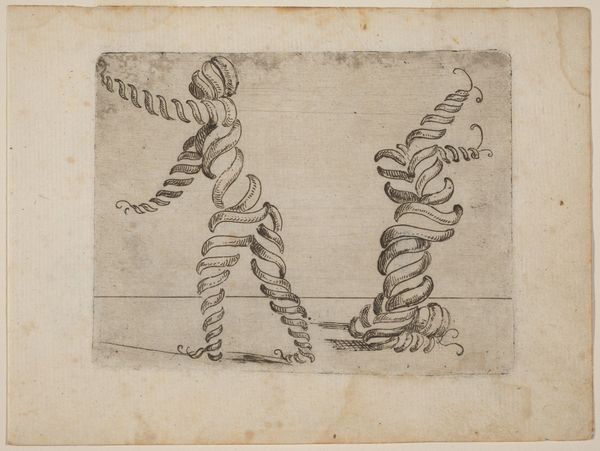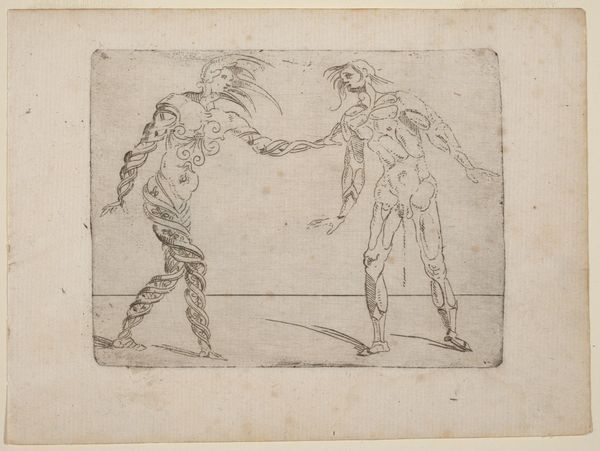
print, etching
# print
#
etching
#
mannerism
#
figuration
#
geometric
#
italian-renaissance
Copyright: National Gallery of Art: CC0 1.0
Giovanni Battista Bracelli made this etching as part of a series entitled "Bizzarie di varie Figure," or "Fanciful Figures," sometime around the 1620s in Italy. Bracelli's bizarre figures, constructed from everyday objects, question the very nature of representation and the artist's role. Is he a craftsman piecing together forms or a visionary conjuring new realities? This print presents a figure and a horse made of zig-zagging elements connected by what appear to be hinges, a possible commentary on the rigid social structures of his time. The strewn objects at their feet—shoes, spoons, and shells—suggest the remnants of daily life, now reconfigured into an absurd tableau. To fully appreciate Bracelli, we might delve into the social history of the print market in 17th-century Italy. How did artists like Bracelli navigate the patronage system, and what freedoms did printmaking afford them? Investigating these questions helps us see art as a product of its time, shaped by both the artist's vision and the world around them.
Comments
No comments
Be the first to comment and join the conversation on the ultimate creative platform.
